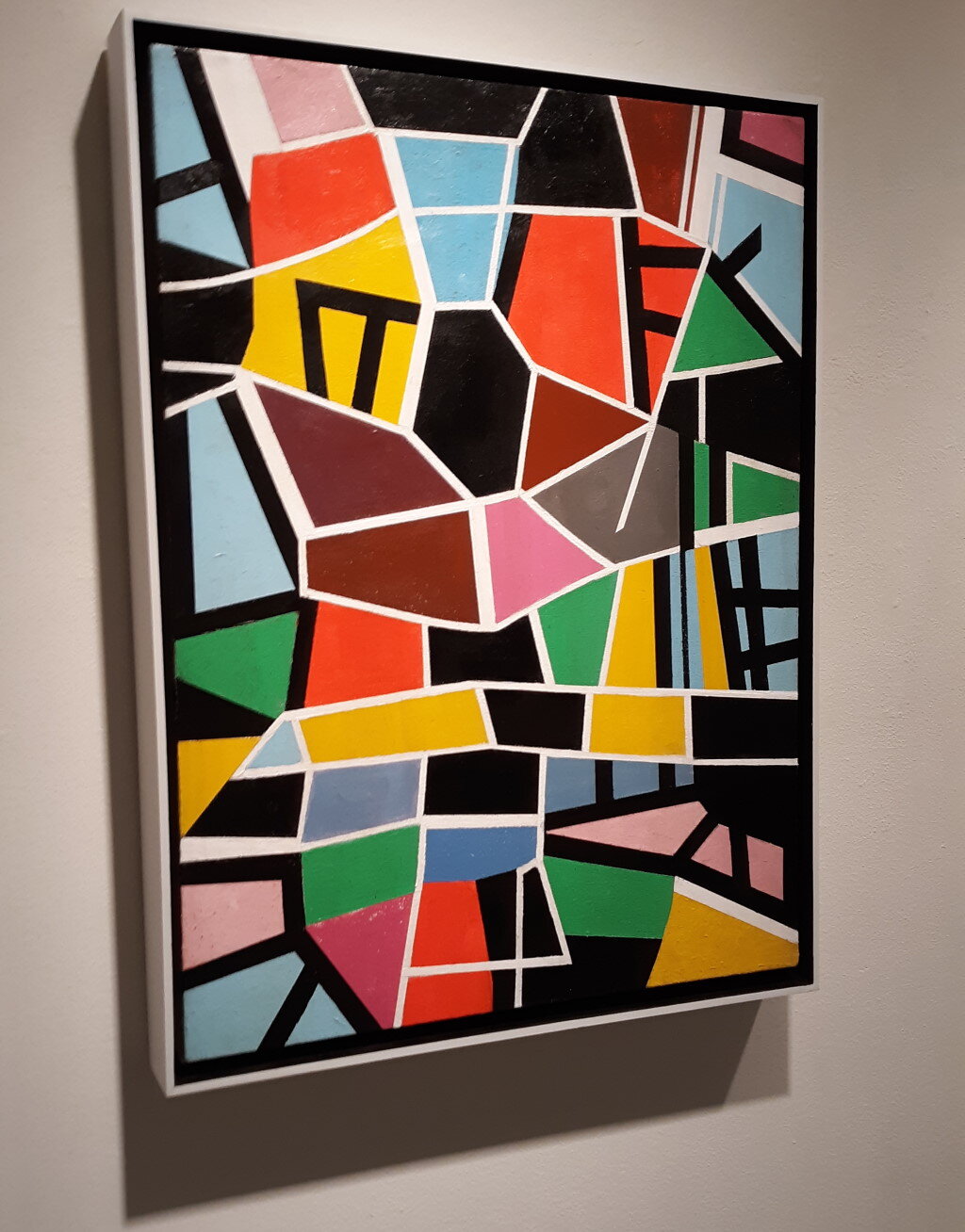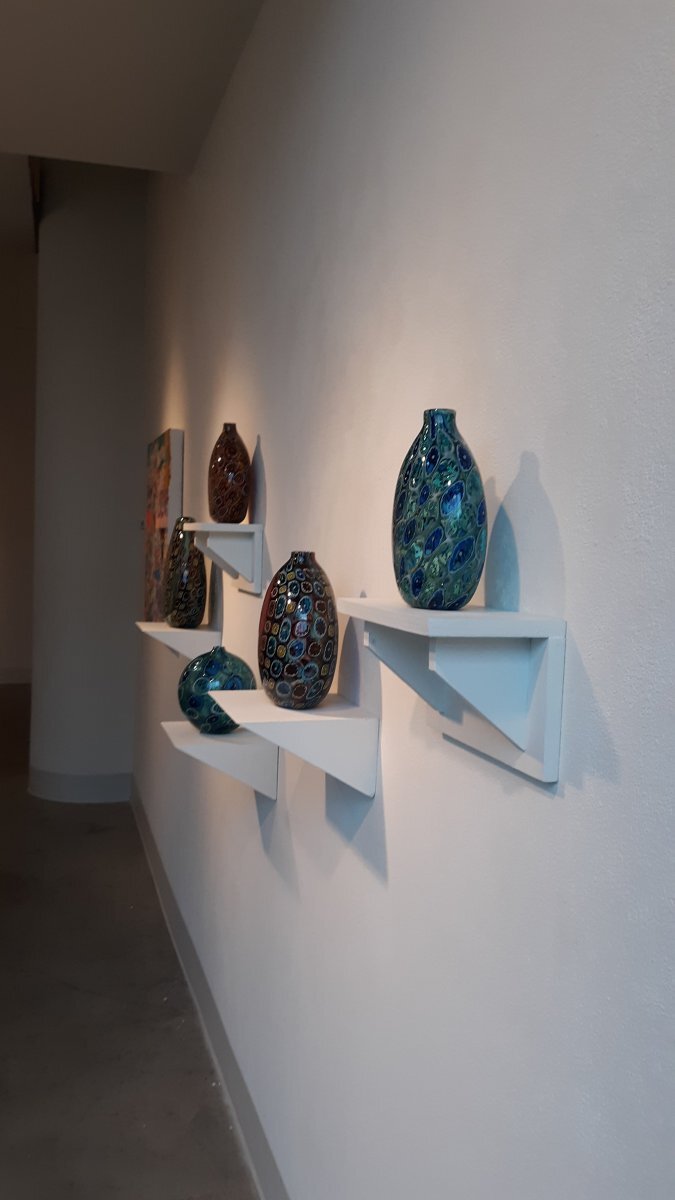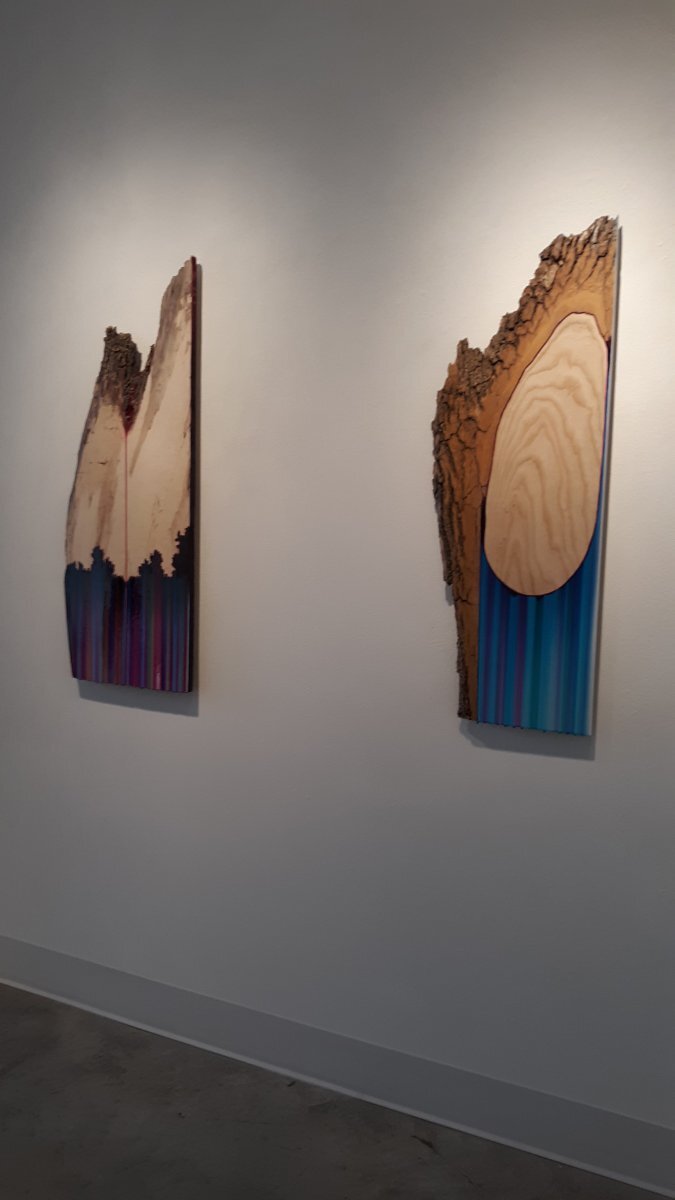*To read the original article on the Urban Milwaukee website, please click HERE
Oh So Many Colors
From the CHROMA exhibit. Photo by Catherine Jozwik.
By Catherine Jozwik - Jan 8th, 2020 03:42 pm
The Tory Folliard Gallery’s current exhibition, CHROMA, features the works of 10 artists who favor brilliant hues, who explore the fascinating relationships between colors and their powerful impact on art.
“Color serves as an open-ended question for a number of artists. A recent renewed interest in color is evidenced by a number of new books on the subject being published,” UW-Madison Professor of Art Derrick Buisch is quoted in the show’s description. “Color is a favorite topic of articles, as its history opens up tales of the fantastic nature of pigments.”
On display through February 8, CHROMA showcases the paintings of Buisch, Terrence Coffman, Ben Grant, Michael Hedges, Shane McAdams, Clarence Morgan, Jason Rohlf, and T.L. Solien, along with aluminum sculptures by Richard Taylor and glassworks by Jeremy Popelka.
Representing every color under the spectrum, from warm golds and oranges to shocking pinks and soothing greens to cool blues and royal purples, CHROMA is a treat for the eyes. Visiting the exhibition is an especially appealing excursion on a gray winter day (like the somber Saturday when this writer visited the gallery).
Most of the works, including those of Solien, who describes himself as an artist of the “absurdist cultural critique,” Rohlf’s meditative collage-based paintings, Coffman’s richly-layered landscapes, and Hedges’ experimentations with form and texture, are abstracted and utilize geometric shapes; notably, triangles and spirals. Solien’s “Nimrod’s Path” and “Man on Path” brings to mind stained-glass windows and kaleidoscopes. With interlocking shapes and lines reminiscent of maps, Morgan’s graphite, watercolor, and ink drawings capture the nature of fleeting thoughts and social and political upheaval, while Buisch’s graphic-inspired “monster” drawings, outlined in light colors, pop against bold blue and bright orange backgrounds.
Several artists employ unexpected media in their works, with dazzling results. For example, McAdams’ paintings, thin stripes of vibrant colors set against pieces of tree stumps, were created using the ink of ballpoint pens. Grant’s “Untitled #300,” (acrylic, automotive paint, ball point pen, colored pencil, enamel, graphite, oil, and spray paint on canvas) is hypnotic.
The exhibit is rounded out by works from Taylor and Popelka. Taylor’s lively “Golden 1” and “Golden 4” sculptures depict a female and a male figure standing atop a series of multicolored blocks of various sizes, works which pay homage to the sculptor’s love of music, poetry and travel. Popelka’s breathtaking glass vases were blown using Murrini (an ancient Middle Eastern technique revived by 16h century Venetian glassmakers on Murrano, often resulting in a mosaic-like effect). “In the impressive body of work created for CHROMA, he explores new patterns inspired by ancient textiles and revisits Venetian favorites,” reads a gallery press release.
“Color is a constant and continuous conversation among artists, a subject that very quickly transcends its rote charts and color wheels to become a force, a driver, a motivator, an endless riddle, and for some, a clear obsession,” Buisch said. “Since the Bauhaus, color continues to be a staple among art school foundation curriculums. This entry-level position in serious art education does not belie the depth that the subject can run for artists.”










